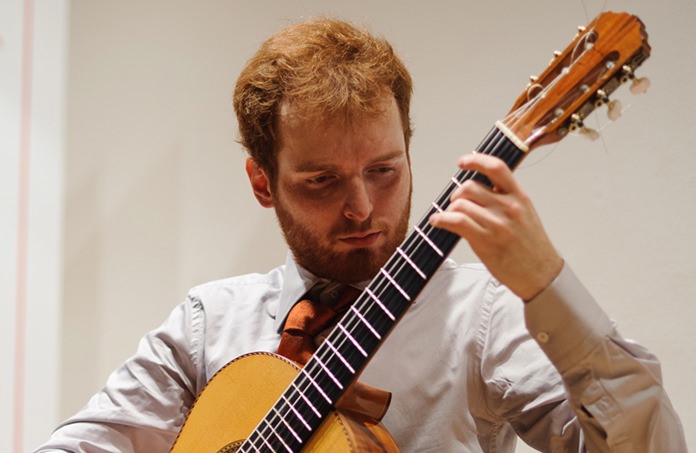
One of those websites that offers useless information for the benefit of people with little else to do, estimates that there are twenty million people in the United States who play the guitar. Another website which deals largely with population figures estimates that there are 260 million guitar players in the world.
That’s an awful lot of guitar players and quite honestly it is beyond me how these figures are worked out. However, I would be bold enough to suggest that many millions of these people are not actually guitar players, but merely people who attempt to play the guitar. The number of people in the entire world that can play the Rodrigo Guitar Concerto for example, is probably little more than a couple of hundred. As to the number of guitar players who are in the same class as Andrés Segovia once was, you could probably count them, should you feel the need to do so, on the fingers of one hand.
You might be surprised to know that guitar has been around for a long time. So long in fact, that its origins are lost in the history of early medieval Spain. The earliest guitar-like instruments were evidently brought to the Iberian Peninsula by the Moors sometime during the 8th century. By the early thirteenth century several types of guitars existed, the two most common being the guitarra latina (Latin guitar) and the so-called guitarra morisca (Moorish guitar).
During the seventeenth and eighteenth centuries, the legendary Stradivari family created some of the finest violins ever made – almost a thousand of them. It’s sometimes forgotten that the family also built cellos, violas, harps and a small number of guitars. Today only between six and seven hundred Stradivari instruments survive. Only one guitar has survived in a playable condition, an instrument with ten double strings similar in common with other guitars of the time. I read somewhere that this priceless guitar, built in 1659 and known as the “Sabionari” is owned by a private collector. Now I don’t know about you, but that gets me ever so slightly cross. It seems so unfair that an instrument of such historical significance remains in the hands of just one individual.
Heitor Villa-Lobos (1887-1959): Concerto for Guitar & Orchestra. Marko Topchii (gtr), Orquestra Simfònica de Castelló cond. Henrie Adams (Duration: 19:23; Video: 720p HD)
Marko Topchii is a brilliant classical guitarist from the Ukraine. He was born into a family of musicians and started studying the guitar at the age of four. Over the years, he’s won dozens of awards worldwide in classical guitar competitions for professional guitarists. Listen to his performance of this concerto, and you’ll see why. He has amazing dexterity, superb articulation and control and a wonderful clarity of playing. He has also developed a lovely tone quality which is noticeable particularly in lyrical melody which appears in the first movement. The second movement (at 07:12) is delightful and leads into an extended cadenza. Topchii gives a magical performance.
Heitor Villa-Lobos was Brazil’s premier composer and was an amazingly prolific one at that, with almost two thousand works to his name. He’s probably best-known for his nine orchestral works that come under the general title of Bachianas Brasileiras. He wrote many works for guitar and this one, which was written specially for Andrés Segovia dates from 1951. It’s lovely music with neo-classical overtones and at times has echoes of Brazilian popular songs.
Niccolò Paganini (1782 -1840): Concerto for Guitar & Orchestra. Artyom Dervoed (gtr) Novaya Rossiya State Symphony Orchestra cond. Freddy Cadena (Duration: 13:31; Video: 480p)
The Russian classical guitarist Artyom Dervoed began his guitar studies at the age of six. He later studied at the Schnittke Music College and Gnesin Academy in Moscow, the Koblenz Guitar Academy in Germany and at the Accademia Chigiana in Italy. He has won many prestigious awards all over the world.
If you are familiar with the works of the Italian Niccolò Paganini you might be surprised to see this reference to a guitar concerto. Although Pagnini was a brilliant guitarist as well as a violinist, he didn’t actually write a concerto for the instrument. This is a reworking of his Grand Sonata for guitar. It opens with a solemn melody on solo guitar accompanied by strings but then gradually the pace increases and Dervoed’s incredible guitar technique comes to the fore. The chromatic runs are spectacular to say the least.
The dance-like second movement, which seems to be set variations on the first theme has some superb playing: just listen to accomplished ease with which Dervoed belts through the remarkably difficult passages. Few guitar players, let alone that 260 million are in this class.
 |
 |
 |





